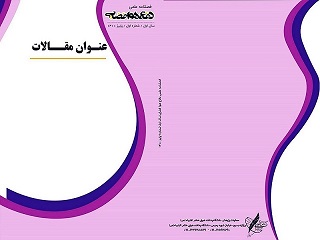نویسندگان
استادیار فیزیک، دانشکده علوم پایه، دانشگاه پدافند هوایی خاتمالانبیاء (ص)، تهران، ایران
چکیده
امروزه تروریسم تهدید جدی برای تمامی جوامع محسوب میشود. دستیابی این گروهها به سلاحهای اتمی امنیت جهانی را دچار مشکلات اساسی خواهد نمود. ازاینرو بررسی روشهای پدافند غیرعامل هستهای در برابر حملات اتمی و پیشبینی جهت انتشار مواد رادیواکتیو ناشی از آن میتواند آمادگی جامعه را در برابر اینگونه حملات افزایش داده و جان بسیاری از انسانها را نجات دهد. نرمافزارهای فراوانی بهمنظور شبیهسازی انتشار مواد رادیواکتیو ناشی از سلاحهای اتمی و حوادث نیروگاههای هستهای به وجود آمدهاند. مدل HYSPLIT یکی از کارآمدترین مدلها در این زمینه میباشد. این مدل قابلیت شبیهسازی با دادههای هواشناسی مراکز مختلف را داراست. در این تحقیق از این مدل به همراه دادههای هواشناسی(GDAS) برای شبیهسازی جهت انتشار مواد رادیواکتیو ناشی از انفجار بمبهای اتمی با اندازههای مختلف در منطقه واقع در شمال ایران استفاده شده است. در این شبیهسازی فرض شده است که ابر اتمی حاصل از انفجار، از 13 ذره با اندازههای مختلف تشکیل شده است. نتایج حاصل نشان میدهد که مدل موردنظر بهخوبی قادر به شبیهسازی جهت انتشار میباشد و افزایش در اندازه بمب باعث افزایش فاصلهی انتشار میگردد و تأثیری در جهت انتشار ندارد. همچنین شبیهسازی بمبهای کوچک نتایج پیوستهتری را به دست میدهد.
کلیدواژهها
عنوان مقاله [English]
Propagation Simulation of Radioactive Particles from Nuclear Bombs with HYSPLIT Software
چکیده [English]
Today, terrorism is a serious threat to all societies. The acquisition of nuclear weapons by these groups will pose serious problems for global security. Therefore, studying the methods of passive nuclear defense against nuclear attacks and predicting the direction of radioactive materials can increase the preparedness of society against such attacks and save the lives of many people. Numerous pieces of software have been developed to simulate the release of radioactive material from nuclear weapons and nuclear power plant accidents. The HYSPLIT model is one of the most efficient models in this field. This model has the ability to simulate meteorological with data from different centers. In this research, this model along with meteorological data (GDAS) has been used to simulate the release of radioactive material caused by the explosion of atomic bombs in north of Iran. In this simulation, it is assumed that the atomic cloud resulting from the explosion is composed of 13 particles of different sizes. The results show that the model is well able to simulate the direction of propagation and increasing the size of the bomb will increases the distance of propagation and has no effect on the direction of propagation. Small bomb simulations also give more consistent results.
کلیدواژهها [English]
- HYSPLIT
- Radioactive particles
- Propagation
- Nuclear bomb
- Nuclear defense

